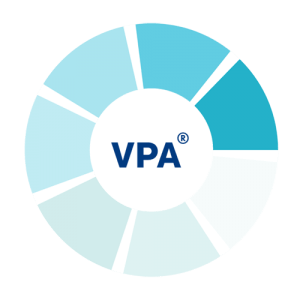
 David Boulton suggests a solution for low literacy rates in America
David Boulton suggests a solution for low literacy rates in America
Plain Text Below
The number one cause of low literacy in America is the archaic mental models that constrain the ways we conceive of, design, and deliver reading instruction. It’s time for a revolution!
According to several measures, over half of all K–12 students in the U.S. are less than grade-level proficient in reading. The psychological, academic, social, political, and economic costs are staggering. Yet it has been this way for decades, despite designating “grade-level reading” to be a national priority, despite thousands of scientific studies, and despite hundreds of billions of dollars spent on reading instruction. Why? What is so difficult about learning to read?
Clearly, early-life learning trajectories that insufficiently prepare children for the challenges (linguistic, cognitive, emotional, and attentional) involved in learning to read certainly make it harder. But why have we not been able to overcome those variations with instruction?
The prevailing wisdom would say it is because teachers do not understand what is involved in acquiring literacy; they have not been trained or are not following the instructional models that are out there.
No! It is the paradigm common to all those models that perpetuates this crisis. Any child who has even a rudimentary spoken language could learn to read, if met and guided in a way that adaptively scaffolded up from the language that he or she has. The fault is not in the kids, and it is not the fault of the parents or teachers, either.
The fault lies with thinking of reading instruction through a 15th-century “static printed text” model of orthography. Our reading science is warped by archaic assumptions about the immutability of the code and, based on those assumptions, locked into thinking about how children’s brains learn to read through the prism of prevailing models of reading instruction.
Kids in the near future will not have to be “taught” to read. Every interaction with every word on every device will support them learning to read on their own.
We will inevitably move to a “dynamic digital character” model of orthography. As we do, simple everyday technology (already installed on smartphones, tablets, computers, and even TV set-top boxes) will make words come alive with everything needed to support kids learning to read them on their own and with far less instruction required.
A Deeper Dive…
We only sense now. We only feel now. We only think now. We only learn now. We are naturally wired to learn from what is happening on the living edge of now. Humans learn best by differentiating, refining, and extending their participation on the living edge of now.
Reading requires an unnatural kind of learning. Reading (as well as writing, math, and all their abstract, conventional, and technological outgrowths) requires our brains to process information in complexly artificial ways. We learn to move, feel, touch, smell, taste, hear, emote, walk, and talk by reference to the immediate internal feel of learning them. However, in the artificial domain of writing, we learn from the external abstract authority of whom or what we are learning from and the technological conventions of the medium we are learning through. In natural modes of learning, we learn from immediately synchronous (self-generated) feedback on the edge of participating (i.e., falling while walking). In the artificial modes, (other-provided) feedback can be far out of sync with the learning it relates to (for example, reading-test results in school that provide feedback far downstream from the learning they measure).
Children who struggle with reading are struggling with an artificial learning challenge.
In reading, our brains must process a human-invented code and construct a simulation of language. This unique form of neural circuitry conscripts the biologically based language processes of our brains to perform in programmably mechanical ways, according to the instructions and information contained in the c-o-d-e. The virtual machinery that must form in our brain to do this is as artificial as a CD player.
The Absurdity of Explicit Abstract Reading Instruction
Can you imagine trying to help a toddler learn to walk by giving him verbal how-to instructions when he is sitting? Can you imagine trying to teach kids to ride a bicycle without using a bicycle—by trying to teach them through the use of abstract exercises rather than a guiding hand during the real-time, live act of trying to ride the bicycle?
All prevailing models of reading instruction share a similar absurdity. They all involve methods of instruction that are abstractly removed from the live act of reading they intend to improve. They are all designed to train learners’ brains to perform unconsciously automatic code-processing operations that will later, when engaged in actual reading, result in fluent word recognition. Why? Because the technology we have used to teach reading has been incapable of interactively coaching and supporting children on the living edge of their learning to read. Unable to respond to learners during the real-time flow of their learning to work out unfamiliar words, we have been forced to train them in abstract, offline ways.
At Learning Stewards (a 501c3 nonprofit), we have turned the process completely upside down and inside out. Rather than using abstract training exercises, we have created a technology-based pedagogy that is based on instantaneously responding to and coaching learners, word by word, whenever they need it.
Our tech provides autonomous learning-to-read guidance and support, which safely and differentially stretches the learner’s mind into learning to decode. Instead of teaching phonics rules and spelling patterns to be later applied (hopefully) to the decoding of unfamiliar words, our tech interactively guides students through the process of working out unfamiliar words, and it teaches them the rules and patterns in the process. With this model, kids learn three simple steps that enable them to learn to read (thereafter without the need for any offline instruction).
Learning to read, one, two, three:1) Click on ANY word. 2) Try to read word in pop-up. Can’t? Click word in pop-up. 3) Repeat.
Every time a student encounters a word that she does not recognize, she touches or clicks it. This brings up a pop-up box containing the word. Clicking on the word in the pop-up results in visual and audible cues that reduce and often eliminate the letter–sound pattern confusions in the word. With each click, the cues advance through a consistent series of steps that reveal, where applicable, the word’s segments, long and short sounds, silent letters, letter-sound exceptions, and groupings (blends and combinations). At each step, the student uses the cues to try again to recognize the word. If she cannot, she clicks again. If all of the cues (seen and heard) after the initial clicks are not sufficient to guide recognition of the word, a final click causes the pop-up to animate (visually and audibly) the sounding out of the word and, lastly, the playing of the word’s sound as it is normally heard.
Kids in the future will not be explicitly, systematically taught to read any more than they are explicitly, systematically taught to talk. They will learn to read during their every interaction with every word on every device (phones, tablets, computers, TV sets, augmented reality). They will learn to read as a background process pervasively available while they are playing and learning with anything involving written words. All words—all devices—all the time.
Decades of research, thousands of studies, and billions of dollars later, more than 60% of U.S. children are still chronically less than grade-level proficient in reading. We are dedicated to ending the archaic, abstract, tedious, precarious, and ineffective (and consequently life-maligning) ways we have historically taught reading. It is time to get our heads out of the past and recognize that learning to read is a technological process, and as such, a process best facilitated by technology.
President of Learning Stewards and Director of the Children of the Code Project, David Boulton is a learning-activist, technologist, public speaker, documentary producer, and author. David appeared in the PBS Television show “The New Science of Learning” and in the Science Network’s “The New Science of Educating” broadcast.








 A new study of more than 11,000 7-year-old twins found that how well children read determines how much they read, not vice versa. Furthermore, the authors of the
A new study of more than 11,000 7-year-old twins found that how well children read determines how much they read, not vice versa. Furthermore, the authors of the  Reading and speaking in a second language can be difficult, especially when the second language was learned later in life. However, a new study in Cognition shows that bilinguals who are highly proficient in their second language can not only overcome those difficulties, but can thrive in their second language and engage in reading strategies just like their monolingual peers. The study focused on students with a high level of proficiency, such as international students who have come to the U.S. to study higher education.
Reading and speaking in a second language can be difficult, especially when the second language was learned later in life. However, a new study in Cognition shows that bilinguals who are highly proficient in their second language can not only overcome those difficulties, but can thrive in their second language and engage in reading strategies just like their monolingual peers. The study focused on students with a high level of proficiency, such as international students who have come to the U.S. to study higher education. 
 A new report from The Education Trust—West finds promising practices around the state that are increasing math supports for English learners (ELs) and boosting achievement rates for this group which had remained low. Second in a series exploring English learner education, the report,
A new report from The Education Trust—West finds promising practices around the state that are increasing math supports for English learners (ELs) and boosting achievement rates for this group which had remained low. Second in a series exploring English learner education, the report,  BoomWriter Media, Inc. has launched its second annual Online Writing Camps, enabling educators to earn additional income during the summer break. These virtual camps provide students the opportunity to participate in a five-day session in which they collaborate with their peer campers to write and publish a chapter book. Teachers promote and run their own camps, selecting dates and flexible daily schedules.
BoomWriter Media, Inc. has launched its second annual Online Writing Camps, enabling educators to earn additional income during the summer break. These virtual camps provide students the opportunity to participate in a five-day session in which they collaborate with their peer campers to write and publish a chapter book. Teachers promote and run their own camps, selecting dates and flexible daily schedules.
 David Boulton suggests a solution for low literacy rates in America
David Boulton suggests a solution for low literacy rates in America
 The China-Pakistan Economic Corridor (CPEC) is part of China’s One Belt, One Road (OBOR) initiative. Known as the New Silk Road, the project currently involves 65 countries, with more expected to join, and caters to more than half of the world’s population.
The China-Pakistan Economic Corridor (CPEC) is part of China’s One Belt, One Road (OBOR) initiative. Known as the New Silk Road, the project currently involves 65 countries, with more expected to join, and caters to more than half of the world’s population. California Assembly Bill 2514 (Thurmond) Pupil Instruction: Dual Language Grant Program, introduced by Assembly Member Thurmond in February, is sponsored by the California Association for Bilingual Education (CABE) and Californians Together. AB 2514 would provide “seed” and “capacity-building” funding to school districts seeking to expand existing dual-language immersion or developmental bilingual programs or to establish new dual-language immersion or developmental bilingual programs or early learning dual-language-learner programs. The bill would also allow funding for early learning programs for California dual-language learners in preschool.
California Assembly Bill 2514 (Thurmond) Pupil Instruction: Dual Language Grant Program, introduced by Assembly Member Thurmond in February, is sponsored by the California Association for Bilingual Education (CABE) and Californians Together. AB 2514 would provide “seed” and “capacity-building” funding to school districts seeking to expand existing dual-language immersion or developmental bilingual programs or to establish new dual-language immersion or developmental bilingual programs or early learning dual-language-learner programs. The bill would also allow funding for early learning programs for California dual-language learners in preschool. According to “Enrollments in Languages Other Than English in United States Institutions of Higher Education, Summer 2016 and Fall 2016: Preliminary Report,” by the Modern Language Association (MLA), enrollment in language courses other than English fell 9.2% in colleges and universities in the U.S. between 2013 and 2016, suffering the second-largest decline in the history of the census (the largest decline, 12.6%, was in 1972). Fall 2013 enrollments had also declined, but by a smaller margin (6.7%).
According to “Enrollments in Languages Other Than English in United States Institutions of Higher Education, Summer 2016 and Fall 2016: Preliminary Report,” by the Modern Language Association (MLA), enrollment in language courses other than English fell 9.2% in colleges and universities in the U.S. between 2013 and 2016, suffering the second-largest decline in the history of the census (the largest decline, 12.6%, was in 1972). Fall 2013 enrollments had also declined, but by a smaller margin (6.7%).